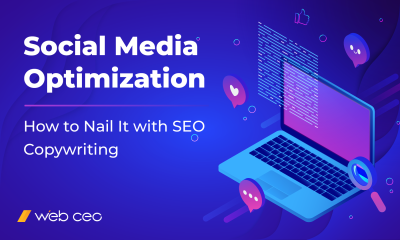
Since the Internet era began, many attempts have been undertaken to help users organize what they find on the web. It all started with bookmarks in the first browsers in 1993 and now we have cloud-based social bookmarking services. After Delicious, took off similar services began to spring up like mushrooms after the rain. Another very noticeable company in this field is Digg, which works as a system of recommendations for the exchange and ranking of news. Afterwards, Reddit and Newsvine and appeared. These days, social media timelines are often used by companies for content curation. According to the “Harvard Business Review,” over the past three years mankind generated more data than during all of its previous history. That’s why the issue of information overload is so important.
Why do I need content curation?
The Internet these days – it’s kind of a huge warehouse, where to find anything valuable is often almost impossible. Searching for information is complicated not only by a huge number of pages, but also by the flow of spam and advertising. The ability to select good content from the huge amount of indigestible information is valuable. As Josh Sternberg noticed 4 years ago, the flow of information from multiple sources, including blogs, media, and social networks has created a vacuum between journalists and their readers, between those who collect information and those who are looking for it.
Content curation is an expression of one of the basic needs of human nature, namely the need to select only the most interesting and relevant information about a subject. This phenomenon is particularly important in the Internet era. That’s why, taking and copying someone’s content is out of the question. It is also a violation of copyright, and the formidable Panda is not sleeping. Be sure to create unique and valuable content. If you copy-paste non-unique content, the Panda filter will find you. If you’re using content curation as a method of content marketing, then always analyze, comment on, or at least announce any new publication to your audience.
What types of content curation should you use?
Aggregation: collection of relevant information on any topic in a specific location. It’s the most common form of content curation, and most online information services are based on this.
Distillation (highlighting), the purpose of which is the restoration of the actual content, highlighting the most important facts from the surrounding cloud of information noise.
Elevation: a fragmented flow of information stands out, which is summarized and discussed.
Mashups: collection and integration of different information about a subject in the form of new, original content.
Chronology: gathering information on a particular topic for a specific period of time. This is used to show the process of a subject’s development.
EXTRACT CONTENT AND BENEFIT FROM IT
There are many websites and tools to assist in content curation, but none of them will work if you do not know the main thing – how to separate the wheat from the chaff. In other words, first you must gather all the information on a particular subject, and only then begin direct selection of the most interesting and relevant parts.
The best way to gather information is monitoring. For example, if you want to curate the scope of SEO, you should start by reading sites in the same field daily. You should become familiar with the web sites and blogs of authoritative experts in this field. Select the most interesting ones and start tracking the activity of certain authors (create Twitter lists for instance). With the help of the WebCEO Social Citation Tool, you can find out what type of content and what topics have the greatest response among your readers in the social networks.
Benefits
- Content curation helps find interesting articles, materials, media (photos and videos), and also helps you get acquainted with similar experts / enthusiasts like yourself.
- Content curation also helps share and find content on the topics that interest you.
- Furthermore, various studies have shown that such services increase the involvement of customers, increase brand awareness, etc.
- It helps to increase the amount of backlinks and visibility on Twitter, Facebook, Google, Tumblr and other social networks.
SHARE YOUR CURATED CONTENT
Abstracting is the easiest and most popular way of content curation. The curator usually uses social buttons to tell subscribers about liked material. Links to relevant content, as well as a preview, including a few sentences from the source and a photo, appear in the newsfeed. You offer your audience materials previously published on other sites. The effectiveness of passive reposting strongly depends on the authority and popularity of a content curator. If subscribers are listening to you and consider you to be an expert in any field, they will pay attention to the recommended materials.
Summarizing is similar to passive reposting but requires additional effort. It is accompanied by the publication of a link to someone’s content with your own summary (varies from one sentence to several paragraphs). Usually a summary does not contain anything new compared to the original publication, but it informs the reader about the material. A detailed summary can save time for a subscriber, giving him a summary of publications and eliminating the necessity to read it by himself.
Quoting highlights the most interesting quotes and provides comments on them. So, you can share with readers your own view on the discussed issue, which is very essential for the audience. Readers will see the most important quotes from the recommended material, including the opinions and conclusions of experts and thus better understand the gist of the content they will see if they should read the original.
Re-titling significantly increases the clickability of the proposed links. This tactic is actively used in the yellow press (such as DrudgeReport) and partner resources. When sharing a publication, you should change its name or add a provocative comment. Do not overuse provocative headlines and comments, as this approach annoys the audience.
Storyboarding combines several materials devoted to one topic in one publication. If you are curating content professionally, use special tools for creating collections, like Scoop.it.
Parallelizing helps the audience to look at banal phenomena from a new angle. You create your own original publication because parallelizing requires a statement of your views on an issue. Drawing parallels is especially effective if you can tie publications related to your business with some currently popular news stories, specifically newsjacking.
PROMOTE YOUR CURATED CONTENT WISELY
- Focus on one If the collected content includes a wide range of issues, it may be impossible to succeed. If you really want to get the recognition of a target audience, you should collect the best examples of the content in a particular thematic niche.
- Understand the audience needs. You should respond to changing user interests quickly. If you do not know what really interests the audience, you will never be able to become a master in the field of curating.
- Use special tools for content curation.
- Choose only the best content. The level of quality of collected content can affect the reputation of your business or brand. When collecting content, be sure to check the reliability of the source. The selected source thematically must fit into the framework of your business.
- Create a mix of original (your own) and others’ content from various sources because collecting all the content from one source is not always optimal.
- Become a thought leader in your niche. Efficient selection of content should consistently attract visitors. In this case, visitors will have to return again and again to your collection, but only if they see you as an expert in a particular field.
- Add content constantly in order to satisfy customer needs.
- Be creative. When submitting content, you must be diverse. Just as the curator of a museum is trying to determine how selected items should be displayed, you should think creatively about how you should address your audience in order to achieve maximum results. If you constantly stick to the same style and structure, the audience may get bored sooner or later.


